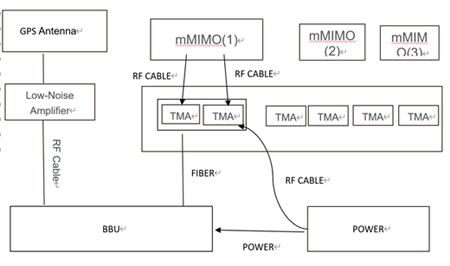How Base Station to Be Protected From Lightning
The base station can be destroyed totally or some of the equipements to be damaged without proper lighting protection. Then how many ways to protect the base station or equipments from lightning?
1 Ground network and earthing terminal bus block(busbar)
2 Base station SPD (Surge Protector)
3 Lightning protection and grounding technology
3.1 How is lightning protection grounding designed?
1) Joint grounding
connect the basic grounding body in each building with other special grounding body to form a common grounding network.
The working ground and protection ground of the equipment share a set of grounding systems with the lightning protection ground of the building.
Sharing a ground network: The building grounding body and the dedicated grounding body (including the iron tower) are interconnected to
form a common grounding network. The building lightning protection grounding and indoor grounding are all led out from the public grounding network.
At the same time, the protective grounding, logical grounding, shielding grounding, and anti-static grounding of the electronic equipment in the server room
share a set of grounding systems. The working ground of each switching power supply should be connected to this grounding system to obtain the same potential reference point.
2) Equipotential connection
The mobile communication base station prefers the ring type equipotential connection, and it is recommended to use the ring type equipotential connection in accordance with one of the following occasions:
–Ground resistance is greater than 10Ω
–The base station is built in suburban, mountainous, isolated and tall buildings
–Sites located area frequently subjected to lightning strikes
–The introduction point of the indoor ground wire is introduced by the sky lightning protection zone
–Due to limited conditions, the indoor / outdoor ground bar is introduced from the same ground point
3) Lightning protection of TT power supply system (3 + 1 mode)
TT power supply system (commonly used in base stations)
After the power supply line enters the station, the SPD in the distribution box should adopt the “3 + 1” mode
• Three-phase, phase-to-zero line adopts voltage-limiting SPD, and zero-line to ground adopts gap type SPD
• Single phase, it is recommended to use the symmetrical “2 + 1” mode to prevent reverse connection of phase and neutral
In addition, air circuit breakers or fuses must be connected in series to prevent fire
4) Lightning protection of distributed base stations
Characteristics of distributed base stations:
–Most of them appear in the form of BBU co-station, and it is necessary to prevent damage to the original lightning protection grounding system from introduing the distributed system
–There are many scenes types of distributed base stations, and there are different lightning protection requirements according to the power supply mode of RRU
(1) Outdoor integrated UPS power supply
(2) Outdoor integrated DC power supply
(3) Remote supply of AC power
(4) DC power supply for remote power supply

(1), (2) The RRU side is treated as a small communication base station, and the BBU side focuses on adding additional optical cables and GPS feeders to ground;
(3), (4) In addition to the RRU side, the protection of key power ports needs to be added on the BBU side
